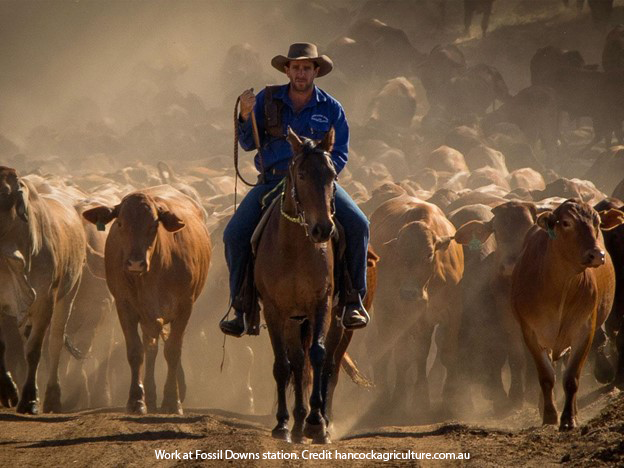 It’s some of Australia’s harshest and yet most beautiful country. It’s a land of contrast, of crocodiles and cattle, and where just two seasons reign supreme; hot and dry, and hotter and wet. It’s here in the Kimberley region of Western Australia you’ll find the ‘Jewel of the Kimberley’, the historic Fossil Downs.
It’s some of Australia’s harshest and yet most beautiful country. It’s a land of contrast, of crocodiles and cattle, and where just two seasons reign supreme; hot and dry, and hotter and wet. It’s here in the Kimberley region of Western Australia you’ll find the ‘Jewel of the Kimberley’, the historic Fossil Downs.
 The 400,000 hectare Kimberley cattle station comes with an incredible tale of a family’s determination, hardships and an all-encompassing love for the land. It was settled as a pastoral enterprise in 1886 when the MacDonald brothers, William and Charles pulled off a feat that will forever be etched in Australia’s pastoral history.
The 400,000 hectare Kimberley cattle station comes with an incredible tale of a family’s determination, hardships and an all-encompassing love for the land. It was settled as a pastoral enterprise in 1886 when the MacDonald brothers, William and Charles pulled off a feat that will forever be etched in Australia’s pastoral history.
Their brother Dan had signed the original pastoral lease for Fossil Downs for 25 pounds a year in 1882. With one goal in mind - to start a new beginning for their families on the opposite side of the country - William and Charles set out to join him.
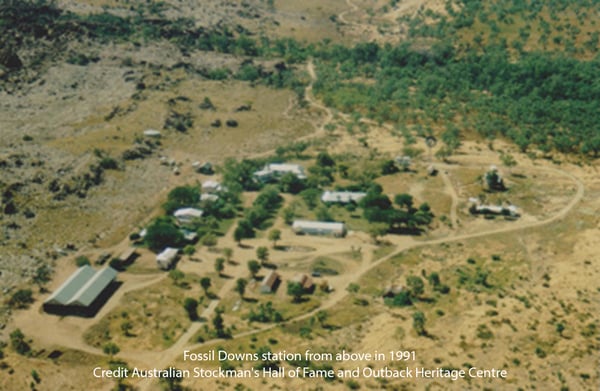 The brothers and their team left Goulburn, NSW in 1883 with 60 horses and 700 cattle. Four years later on June 3, 1886 their epic 5600km journey brought them to Fossil Downs. Only 300 cattle and 13 horses survived the trek that is now recognised as Australia's longest droving expedition.
The brothers and their team left Goulburn, NSW in 1883 with 60 horses and 700 cattle. Four years later on June 3, 1886 their epic 5600km journey brought them to Fossil Downs. Only 300 cattle and 13 horses survived the trek that is now recognised as Australia's longest droving expedition.
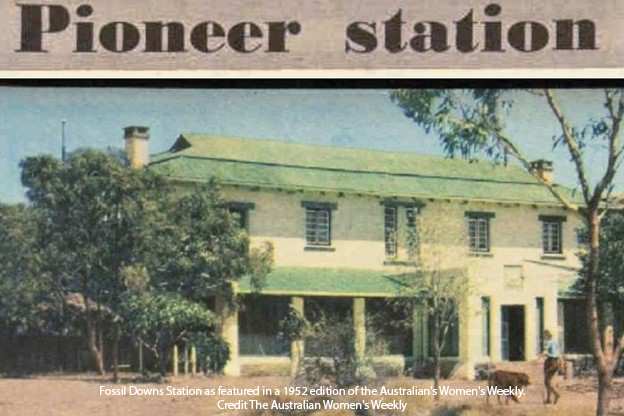 For 133 years the MacDonald family ran Shorthorn cattle until later switching to the Droughtmaster breed. In more recent years Fossil Downs flourished under the ownership of Dan’s granddaughter Annette and her husband John Henwood from 1968.
For 133 years the MacDonald family ran Shorthorn cattle until later switching to the Droughtmaster breed. In more recent years Fossil Downs flourished under the ownership of Dan’s granddaughter Annette and her husband John Henwood from 1968.
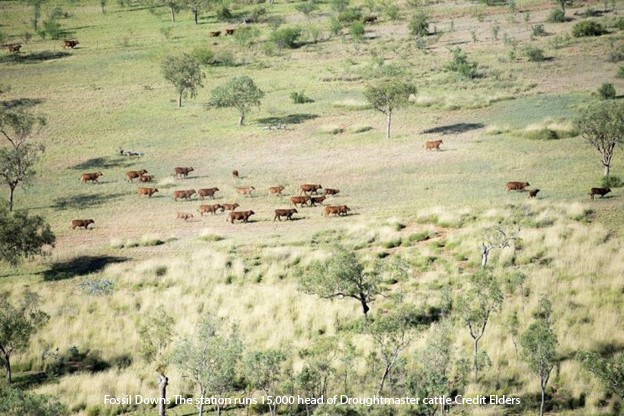 John, who also grew up in the region, describes a unique childhood - he distinctly remembers his parents getting the first flushing toilet in the Kimberley. Refrigerators were designed from hessian with water dripping through them before the electric freezer came along, and finally the life-changing walk-in freezer. And while it certainly hasn’t been smooth sailing, John says he’s had the easier run.
John, who also grew up in the region, describes a unique childhood - he distinctly remembers his parents getting the first flushing toilet in the Kimberley. Refrigerators were designed from hessian with water dripping through them before the electric freezer came along, and finally the life-changing walk-in freezer. And while it certainly hasn’t been smooth sailing, John says he’s had the easier run.
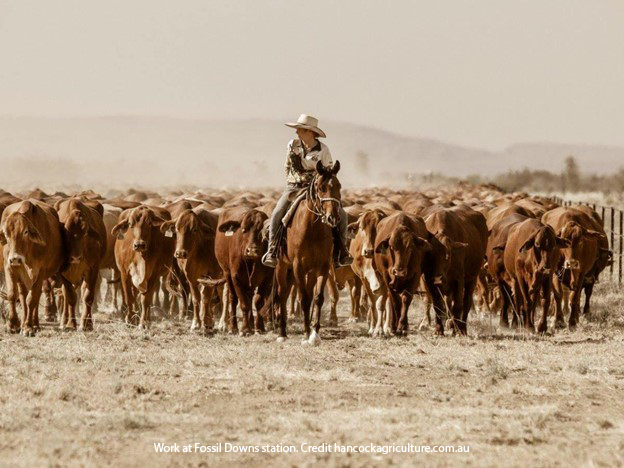
“It was a hard life, a tough life. I’ve always said that our grandparents had it the toughest, our parents had it tough, and we’ve had the best life,” he shared with Central Station podcast.
John proposed to Annette at a bustling Christmas party at Fossil Downs. While she initially replied with ‘I beg your pardon?’, she quickly switched to a resounding yes - she just wanted him to ask her again outside to make sure she'd heard correctly.

When it comes to proposal settings, or homes in general, the incredible Fossil Downs homestead is hard to beat. The unusually grand homestead is a remarkable achievement in the remote Kimberley location. The two storey building features bricks made from mud from the Fitzroy River and a jarrah staircase built in Perth and transported to the station. The original fittings and furnishings have been preserved, along with a number of buildings on the station including the stables dating from the 1930s and station living quarters.
The homestead was designed facing the river and during a particularly big flood John recalls crocodiles making their way to the house for refuge, while a few snakes even sought higher ground in the bed. Twenty-four hour power didn’t come along until the late 1990s and John says the intense heat while trying to sleep at night is hard to forget.
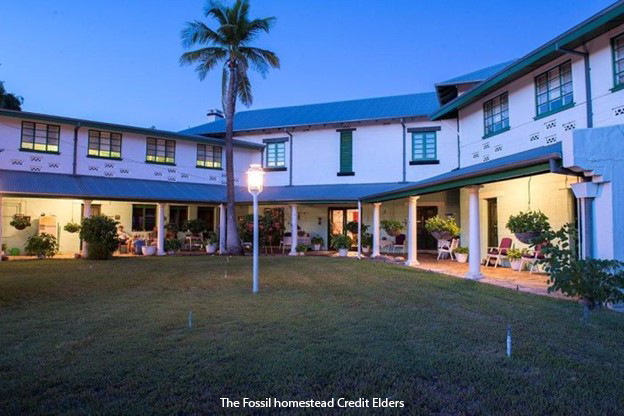
The station is flooded in annually by the Margaret River but with plenty of stores stocked up, Annette used to relish the period of isolation in her Territory paradise. Such is the intensity of flooding at Fossil Downs, the pool table is even on hoists so it can be lifted to safety.
In 2015 the family made the difficult decision to sell Fossil Downs. Bought by Hancock Agriculture for an estimated $30 million, Daniel Wade, general manager-business development, said he’s very excited about the station’s future and the development of northern Australia.
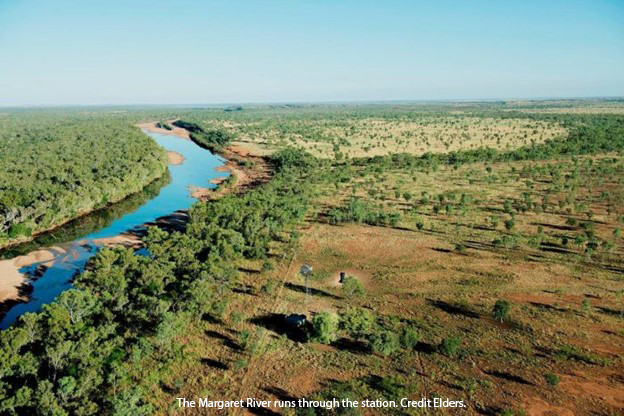
“We often lead trials of new technology to make station and farm life much safer, like the communication system first implemented at Fossil that is now spread out across all Hancock and Kidman stations and farms – an area larger than north New Zealand,” he said.
“Developing northern Australia is so important, especially for the good jobs it brings for those in the area and the feeling of self-value, esteem and contribution that come with them.”
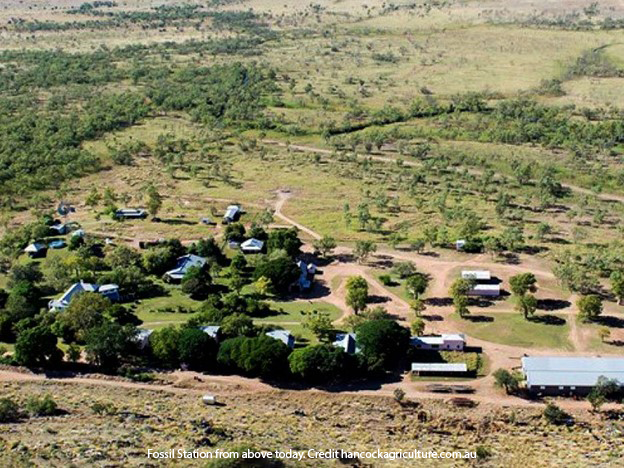
Executive chairman of Hancock Agriculture, Gina Rinehart says honouring the tapestry of history will always be a priority at Fossil Downs. While much has been documented on the MacDonald brother’s drove, she shared a little-known fact that during World War II, Fossil Downs was used as an Army headquarters. In 1972 Princess Margaret and Lord Snowden also popped in for a visit.

“Not only is it a wonderful place to bring up children in the north, but it is also somewhere special where we gather around Easter time each year to meet with our northern station managers and discuss first-hand budgets and the interesting opportunities for discretionary expenditure that can make our stations even better,” Mrs Rinehart says.
 Results
Results
